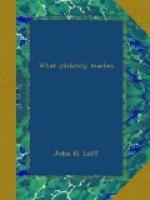Having considered the design and the methods of preparing plates and printing stamps the next thing to attract our attention is the paper. We here show you some photographs of paper. These were not taken by reflected light but by transmitting light through the paper, so that we have the fibre and structure of it.
[Illustration: Paper]
The two varieties of paper most used for stamps are termed wove and laid. Wove paper has an even texture suggestive of cloth. Like cloth it may show no grain when held to the light or it may have the appearance of interwoven threads. The paper ordinarily used for books and newspapers is wove. There is a very thin, tough wove paper, much like that familiarly known as “onion-skin,” which is called pelure by philatelists. On a few occasions a wove paper, which is nearly as thick as card board, has been used for stamps.
[Illustration: Paper]
Laid paper shows alternate light and dark lines, parallel and close together. These lines are called vergures. There are usually other lines, an inch or more apart, crossing the vergures at right angles.
Ribbed paper has much the appearance of a fine closely laid paper. It is, however, a wove paper with a corrugated surface. In oriental countries, especially Japan, a peculiar, tough, cottony paper is produced. It is sometimes wove and sometimes laid, usually thin and hard to tear. I believe this is made from rice straw. Paper which has thin lines about the distance apart of the ruled lines in writing paper is called batonne, from the French baton, a stick or rule. If the paper between the batons is wove, it is called wove batonne. If the space is filled with fine laid lines, it is called laid batonne. Quadrille paper has laid lines which form small squares. When these lines form rectangles, it is called oblong quadrille.
[Illustration: Paper]
[Illustration: Paper]
[Illustration: Paper]
Some of the stamps of Mexico were printed on paper ruled with blue lines. This was merely ordinary foolscap paper. Many of the early stamps of Russia were on a paper having the surface coated with a soluble enamel. This not only gave a very fine impression but, on an attempt to clean a cancelled stamp, the enamel would wash off, carrying the design with it.
Two stamps of Prussia, issued in 1866, are usually said to be on gold-beater’s skin. But they are really on a very thin tough paper which has been treated with shellac, parrafine, or something which makes it transparent, and afterwards coated with a gelatine preparation. On this the design was printed reversed, i.e. only to be seen correctly when viewed through the paper. The stamps were gummed on the printed side. When they were affixed to an envelope any attempt to soak them off resulted in the paper coming away while the design adhered to the envelope, like a decalcomanie. Essays of this nature were made in a number of countries, including our own, but Prussia was the only one to make and use the stamps.




